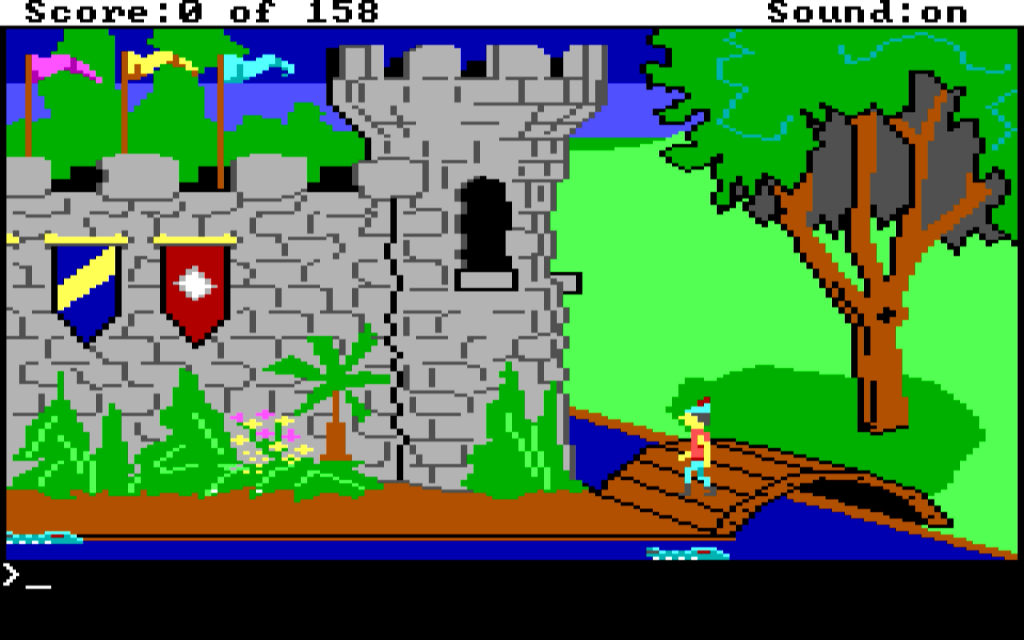

King’s Quest I: Quest for the Crown was an adventure game first published in 1984 by Sierra Online, designed by Roberta Williams, a pioneer in the world of video games . It was a massively influential game, revolutionizing the genre of adventure games and forever changing the gaming landscape. Whereas previous games in the seventies and early eighties would be text based adventures, where the player would type commands to see how the story would unfold, King’s Quest was among the first games to combine the text based game with graphics. Video game journalist Justin McElroy writes:
“King’s Quest took players from staring at static screens . . . and shoved a representation of the player into the middle of the action. This shift from observer to direct participant was unprecedented, and it created a blueprint for the vast majority of adventure games that would follow.”
Story
In this game, the player controls the character of Sir Graham, a noble knight who seeks three treasures in the country of Daventry. When he returns those treasures to the old king Edward, he would inherit the throne. The treasures, a magic mirror, shield and chest of gold, have been stolen by creatures and spread throughout the land, where Graham is faced with danger, monsters and puzzles. For its time, King’s Quest had spectacular visuals: green forests, rivers and many characters inhabiting the land. Combined with the fairy tale like narrative, this created an incredibly immersive experience.
Gameplay
In King’s Quest, you control an avatar representing sir Graham. With the arrow keys you control his movement: pressing once in a certain direction leads Graham to walk in this direction until the button is pressed again. This can need some time to adjust to, especially when trying to walk in diagonal lines, such as crossing the wooden bridge on the very first screen of the game, which leads many players to fall in the crocodile-filled canal. When reaching the border of the screen, you will change to a new, adjacent screen, showing a new part of the world. You can walk in all directions, except when you are blocked by a certain obstacle. This creates an open world where the player can freely roam around, allowing you to freely walk around and make up your own order and explore the game on your own pace. To interact with creatures, objects or the environment, the player needs to use typed commands. For example, when you reach the doors of the castle, you must type in open doors, after which a text will inform you that the big doors swing open. When you find a tree, you can type climb tree, to inspect a space you type look room, and there are many many ways to interact with things. Whenever you type something the game does not understand, it will tell you:

This mechanic invites the player to think creatively and look for possible solutions. Playing this game now is still an incredibly immersive experience: the retro graphics have an undeniable charm and the typing mechanic is actually a fun and challenging way to see what you can do. In this way, it also feels surprisingly free in what your options are as a player, more that many games that cam afterwards. I still think it holds up as an AMAZING adventure game, and I urge everyone to play it.
WHICH YOU CAN DO HERE !!!!!!!!!!!!!!!!!! PLAY IT PLAY IT PLAY IT!!!!!!!!!!!!!!!!!!!!!!!!!!
SOURCES:
ANASTASIA SALTER. “King’s Quest: Narrative.” In How to Play Video Games, edited by NINA B. HUNTEMANN and MATTHEW THOMAS PAYNE, 29. NYU Press, 2019. https://doi.org/10.2307/j.ctv12fw8tn.7.


Recent Comments